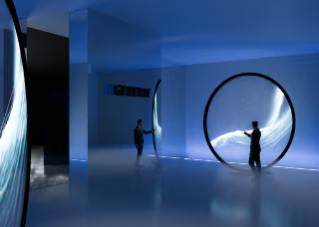Domus 1047 June issue focuses on the theme of community, reflecting on how the last few months, in which we have shared vulnerabilities and isolation, have made us reconsider the value of community at all levels. David Chipperfield in his editorial analyses the meaning of the word ‘community’ in this sensitive time. The guest editor says that, “our commitment to the idea of community will be put under extreme scrutiny”.
In this month’s Agenda, Eric Klinenberg makes it clear that the strength of a community can influence our life expectations. Rory Olcayto points out that our initial confidence in architecture has cracked after decades of market domination. Vittorio Magnago Lampugnani questions the role of the designer, suggesting that we actively design vital open spaces, studying the ‘memory of strategies’ of historical urban architecture.
David Chipperfiled virtually visits Tatiana Bilbao’s studio, while In Affinity, Portuguese architects Jorge Carvalho and Pedro Bandeira select three residential projects built in post-industrial areas of Barcelona, Zurich and Los Angeles.
In the Design and Art section, studio Formafantasma questions the predominance of human-centered thinking, pushing it to evolve into a more synergistic approach between species and disciplines. The monthly column curated by Jasper Morrison and Francesca Picchi focuses on the qualities that contribute to making a ‘good object’, from initial ideas to use. The artist Anselm Kiefer illustrates the project he is working on to restore the house where he spent his childhood.
Among the Reflections, Jaume Mayol analyses the work of Spanish studio TEd’A Arquitectes by reviewing the drawings of a private home in Palma de Mallorca. Rik Nys analyses the history of prefabricated buildings, drawing a map of the cultural and political implications of this approach. Carlos Moreno explains his project for Paris, a 15-minute City, which has attracted the mayor’s attention. Fulvio Irace revisits Domus under the direction of Ernesto Nathan Rogers, who led the publication in the aftermath of World War II.
In this month’s Diary, pages dedicated to current affairs, Tobia Zevi imagines the city in which we would like to live post-coronavirus. In the section dedicated to art, Valentina Petrucci analyzes how the life of an artist is perceived through the canvas. Loredana Mascheroni describes the project of a house-atelier in Berlin, balanced between minimalism and decorum, while Elena Sommariva, involves us in a conversation with designer Patricia Urquiola. This month’s section ends with a virtual coffee between Walter Mariotti and Gian Arturo Ferrari, deus ex machina dell’editoria, who explains why the spread of culture must rise from the bottom up.

Bathed in light
Drawing from its more than 30 years of experience, SICIS introduces backlit pools in Vetrite, a patented solution that combines design, technology and function.




























